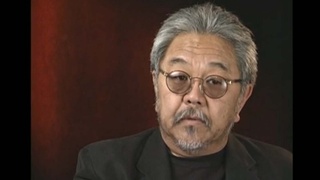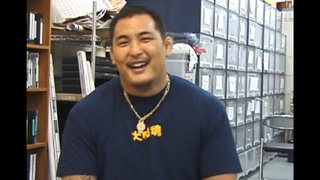Interviews
The differences between Japanese women who emigrated from Japan and those who did not (Japanese)
(Japanese) Around that time (1970s-80s), I was asked by newspapers, like Asahi Shimbun, to write about my impressions of the people whom I interviewed. So I wrote that these Issei women are, as they often say in Japan, “women who are soaring”—you know, women with independence. That’s the kind of women that I said—that I wrote—that they are. But then, I immediately received a reply in the mail from a person majoring in economics, telling me that my thoughts “are too naïve.” It said that “You need to think more about the economy of Japan, about how extremely difficult the circumstances were, and how it was forcing people to emigrate… there’s not enough focus on these aspects in your article.” So I replied that “I do understand,” that the extreme economic circumstances were indeed one of the reasons for emigration. But if you ask me about the difference between the women who emigrated from Japan and those who didn’t—even during this extreme economic slump—I would still say that the ones who emigrated were the ones with a strong sense of independence. They are the ones who made their own decisions, chose their own path, and decided to raise their children over here.
Date: October 7, 2005
Location: California, US
Interviewer: Ann Kaneko
Contributed by: Watase Media Arts Center, Japanese American National Museum
Explore More Videos


Family interrelations between mother and father
(1926 - 2012) Scholar and professor of anthropology. Leader in the establishment of ethnic studies as an academic discipline

Going back to Hawaii
An expert researcher and scholar on Japanese immigrant clothing.

Picture brides and karifufu
An expert researcher and scholar on Japanese immigrant clothing.

Working at the magazine
(b.1948) Nikkei from Southern California living in Japan.

Kibei schoolchildren in Hiroshima, Japan
(b.1913) Kibei from California who served in the MIS with Merrill’s Marauders during WWII.

The reason he came to the United States (Japanese)
(1949 - 2019) Taiko player. Founded five taiko groups in Southern California

Grandfather's arrival in the U.S., experiencing discrimination
(b. 1939) Japanese American painter, printmaker & professor

Mother's immigration to U.S. as a treaty merchant
(b. 1927) Japanese American Nisei. Family voluntarily returned to Japan during WWII.

Why her parents came to Canada
(1918-2004) Interned in Slocan during World War II. Active member of the Japanese Canadian community.

Family background of Fredrick Yoshihide Sasaki
(b. 1918) Issei businessman in Canada

Arranged marriage
(b.1912) Japanese Canadian Issei. Immigrated with husband to Canada in 1931

Her early life in Canada
(b.1912) Japanese Canadian Issei. Immigrated with husband to Canada in 1931

Coming to America
(b.1943) Shin-issei grand master of taiko; founded San Francisco Taiko Dojo in 1968.

The reason for coming to Japan
(b. 1967) Hawai`i-born professional fighter in Japan
